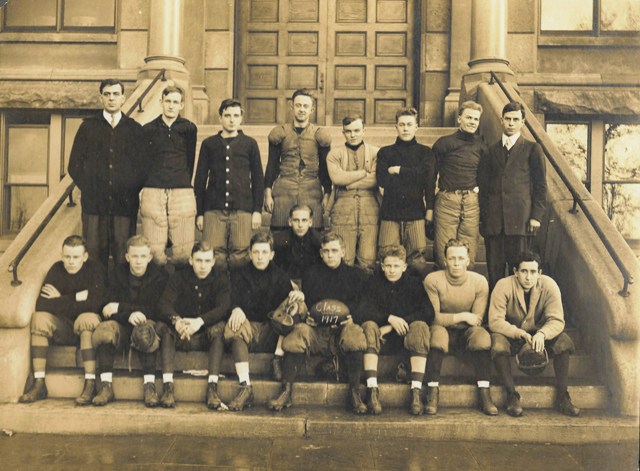
There was a time when the students at Augustana College, in Rock Island, Illinois, were living the typical 1917 college life. As a seminary student, my grandfather, Emil Johnson, was highly involved in the college experience. In this photo of the Augustana football team, Emil is in the front row, second from right.

Sports and other activities went on as normal. Emil is the one seated in front, his hand slightly blurry.
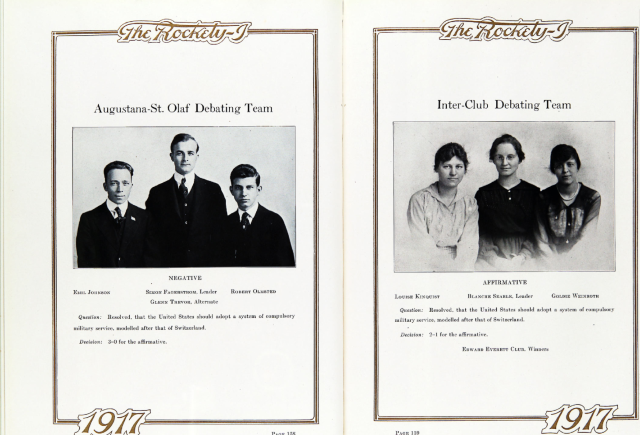
The debate teams were on a winning streak.
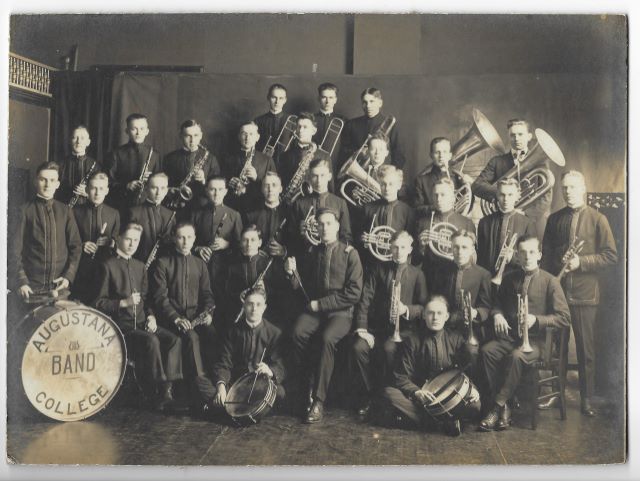
The Augustana College Band was scheduled to give a series of concerts in several states. Of the three French horn players, Emil is the one farthest to the right.
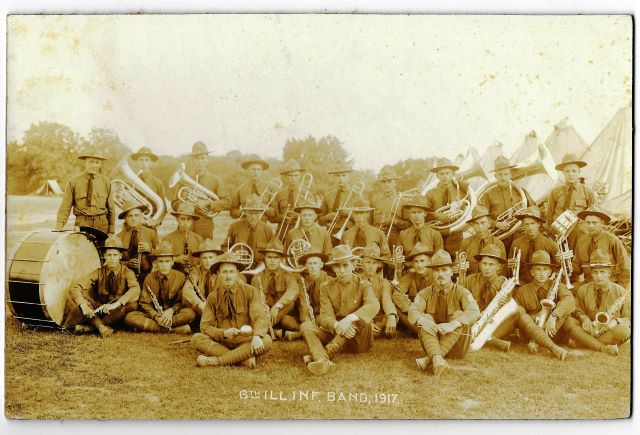
But something happened that changed not only the trajectory of their lives, but it changed the world as we know it today. On April 6, 1917, the United States declared war on Germany, and thus became involved in the war that had been going on in Europe for roughly the past three years. Before the end of that month, most of the Augustana bandsmen had joined the 6th Illinois Infantry National Guard. After their initial training, they were sent to Texas and became part of the 123rd Field Artillery. From there they continued on to France, where they would stay until the end of the war.
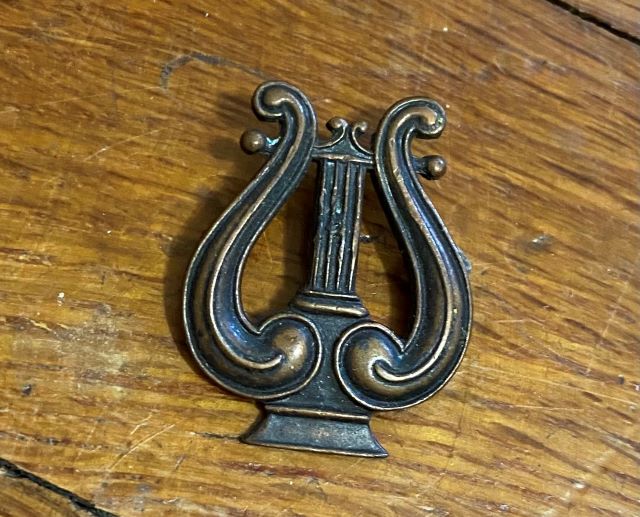
Pictured above: a military band collar insignia belonging to Emil. The Augustana band members joined the army with the specific goal of becoming stretcher bearers and saving lives. At that time, the company bands were commonly assigned to this job. In Texas they were trained in first aid and the skills needed to transport patients with various types of injuries. (To see an informative, educational website about WW1 stretcher bearers and medical caregivers in the UK, you can click here.)

Meanwhile, similar scenarios were played out all over the country. Edla Nelson, who married Emil in 1922 and became my grandma Johnson, wrote the caption on this photo from Sioux Falls, South Dakota.
My other grandfather, George Anderson, was working on his family’s farm in Fosston, Minnesota when he joined the US Navy. Based on letters and other documents, we are pretty sure George came down with the “Spanish flu”, or some other serious illness, while he was in the Navy. He was to spend 43 percent of the time on the “sick list” between January 1918 and December 1919. After the war he never fully regained his health and passed away in 1944 at the age of 47.

This picture always amazes me because of how young George looks. I don’t know if it was taken before or after he went overseas.
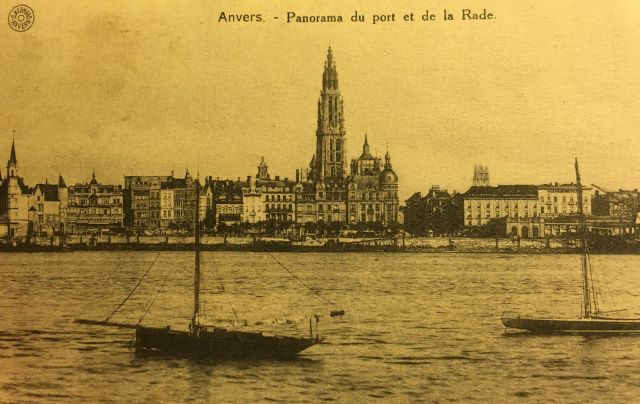

“Geo” was notorious for not putting dates on his letters, and I can’t see a postmark. Addressed to his sister Lydia, the letter gives his opinion of Belgium and Holland, stating that the latter had France beat by a mile. I’m guessing it was written after the war was over, since he mentions not knowing when they will leave for the states. But since the USS Powhatan was a troop transport ship, they could have been going back to pick up more soldiers. As far as I know this is the only piece of mail I have from either of my grandfathers when they were overseas.

In 1921, Lydia married Glen Rushford, who had also been in the Navy during the war.

Glen came down with the mumps in March of 1918 and was in a naval hospital until April 25 of the same year. You can see how many other mumps cases there were, even in this small screenshot from Ancestry.com.
Emil’s brothers, John Alfred and Nels Ivar Johnson. John Alfred spent time in France, but because Nels Ivar, an avid horseman, was kicked by a horse during training, he was forced to spend his enlistment in the States.


People may not realize that there was a still a US Cavalry during WW1. To my knowledge Nels Ivar is not in these photos, but I imagine his training would have looked something like this.
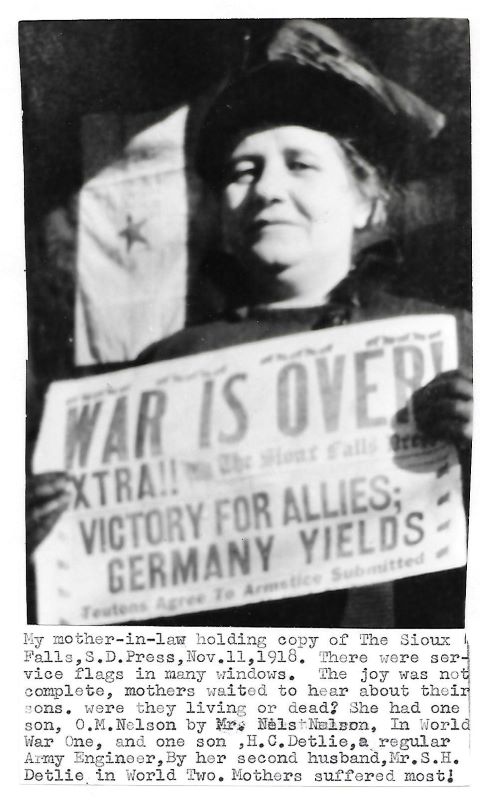
Then, finally, the war was over. The photo above is taken from Emil’s manuscript, “The Forgotten Bandsmen”. His mother-in-law, Charlotte (Nelson) Detlie, was my great grandmother. I appreciate the thoughtful way Emil captioned the photo. Truly the “Great War” had a staggering effect on all who lived, and loved, through it. As a child it never occurred to me to ask my grandfather about his war experiences. In fact, I only had a vague notion that he had even been in the war. But I’m glad that during the last few years of his life he put together “The Forgotten Bandsmen”. We would do well to spend some time this Veterans Day thinking about the sacrifices that were required of those who lived before us.
Related posts: “The Forgotten Bandsmen”, “Cast of Characters” , and “(Not) Home For Christmas, Part 1 and Part 2“


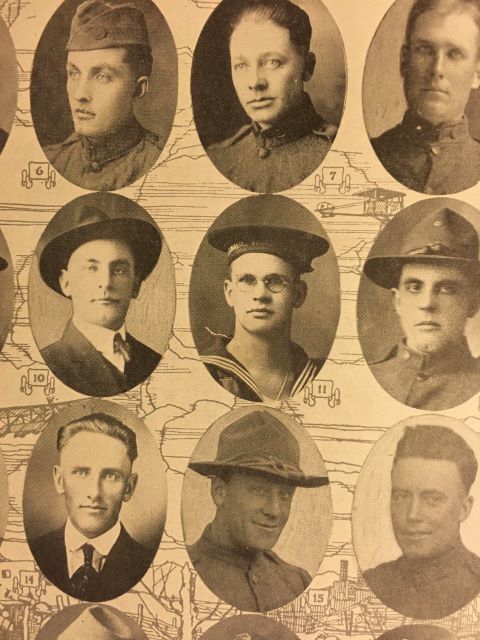

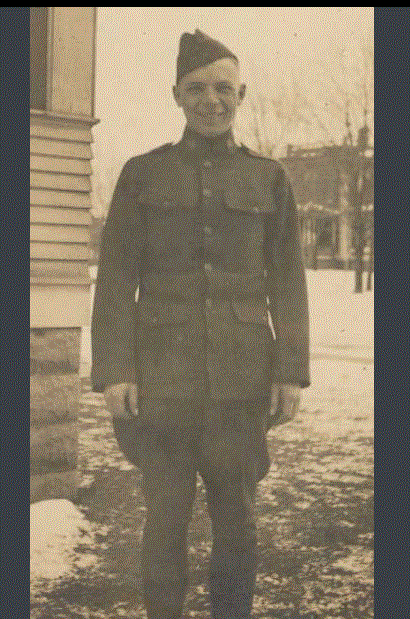
What a legacy! Thanks for sharing 👍
Thanks, Patty! I’m glad you liked it. 🙂
Wonderful history! I need to ask my mom about my grandfathers while I still have time. I know very little about their histories, especially during WW1.
Yes that’s a good idea. I wish I had asked more questions while I had the chance!
What great family history! Love this. ❤️
Thanks! 😀
Family stories like yours really make history come alive. I also wish I’d asked more questions of my elders while I had the chance. We even missed the opportunity of finding the names of some of the people in the old photos we’ve inherited. Well done for keeping their stories alive, Debra 🙂
Thanks, Chris! I have lots of photos of people that I have no clue who they are. But I scan them anyway and put them on my computer in a folder called “People we don’t know”. 😂
Lulu: “Happy belated Veterans Day! So fascinating to see these veterans from over a hundred years ago!”
Foster: Yeah we think it’s really cool to see the old family pictures! Mom doesn’t like me to play in the photo boxes though…🐱
Wow! What a History. Thanks for sharing.
Glad you liked it! 😀
Wonderful research bringing history to life – hope all is well, John
Thanks John! Yes all is well here, hope it’s the same with you!